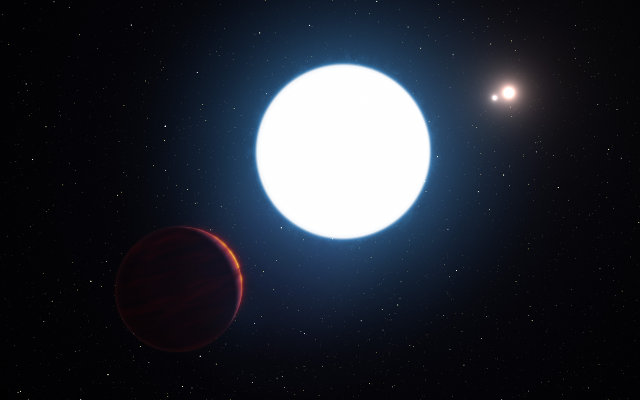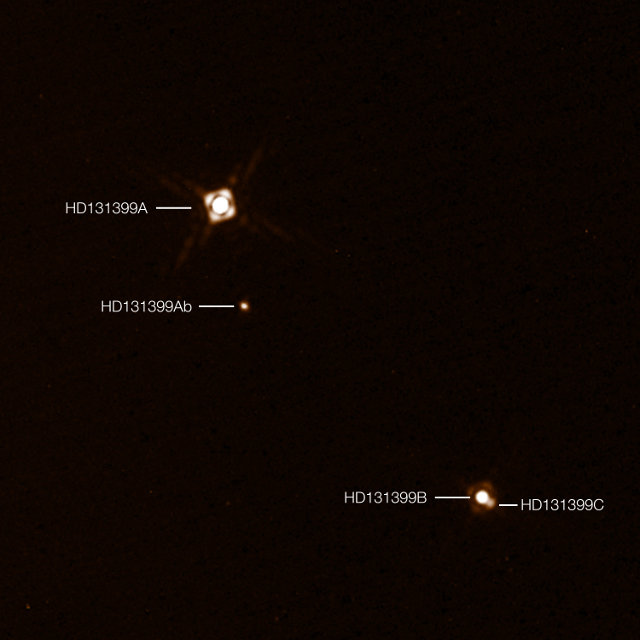
An article published in the journal “Science” describes the discovery of the exoplanet HD 131399Ab, the first ever found in a system with three suns. A team of astronomers led by the University of Arizona used the SPHERE instrument mounted on ESO’s VLT to obtain a direct image of HD 131399Ab and its system’s three stars. Scientists thought that such an orbit was unstable but this case seems to contradict that idea.
In recent years we started getting used to Tatooine planets, as exoplanets that orbit two stars are informally called after Luke Skywalker’s home planet. In “Star Wars” that kind of planet was shown many years before one of them was actually discovered but this time the research has gone even further with the discovery of exoplanet HD 131399Ab.
The HD 131399Ab trinary system is about 320 light years from Earth and the exoplanet has an age estimated at about 16 million years, which means that in astronomical terms is very young. It’s a gas giant with a mass estimated around four times that of Jupiter. Its temperature is about 580° C (about 1080° Fahrenheit) and all of that makes it one of the coldest and less massive exoplanets of which a direct image was taken.
The astronomers used the SPHERE (Spectro-Polarimetric High-contrast Exoplanet REsearch) instrument on the VLT (Very Large Telescope) to photograph the exoplanet HD 131399Ab and its three stars. It’s an instrument activated just over two years ago exactly for that purpose. It can also detect planets close to their star, instead the planet HD 131399Ab is very far so the only problem was detecting its very dim light.
The exoplanet HD 131399Ab’s year was estimated at about 550 Earth years but it will take more observations to obtain accurate data on its orbit. Computer simulations were carried out to try to understand the movements of the stars and the planet and the most likely theory was offered.
The brightest star, HD 131399A, has a mass that is 80% higher than the Sun’s, the other two stars, HD 131399B and HD 131399C, are smaller and orbit the biggest one at a distance that is about 300 times that between the Earth and the Sun. the two smaller stars also orbit around each other at a distance similar to that between Saturn and the Sun.
According to this simulation, the exoplanet HD 131399Ab orbits the biggest star at a distance that is about 80 times that between the Earth and the Sun, about twice that between Pluto and the Sun. This situation is theoretical and further observations are needed to figure out if it’s really stable because the combination of three stars and the exoplanet makes different possibilities for their orbits possible.
Kevin Wagner, the article’s lead author, explained that computer simulations show that the exoplanet HD 131399Ab’s orbit can be stable. However, changing the situation even very little is enough for the orbit to quickly become unstable.
It’s unclear how the exoplanet HD 131399Ab ended up into such an apparently unique orbit. Figuring out whether this is an exceptional case or it’s just the first in a class of solar systems that by accident we discovered only now is the next goal of the research. The study of multiple systems is just starting so it will take time to understand their formation and evolution.


